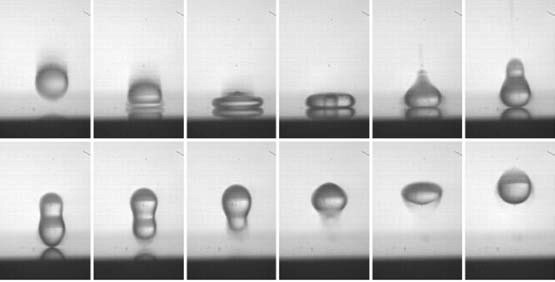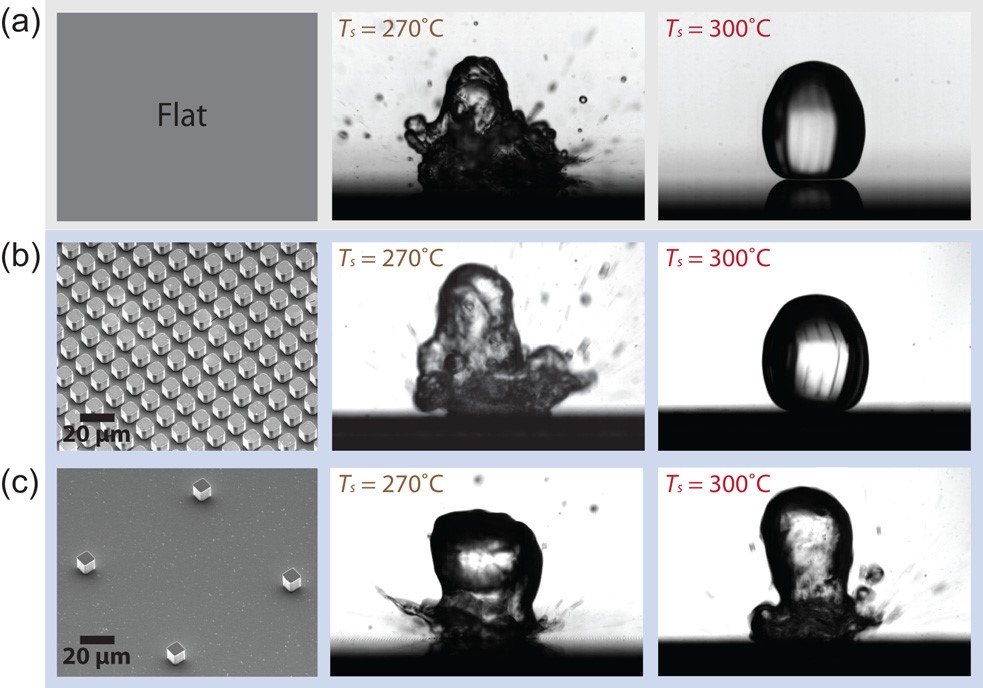Desired candidate : Master’s or bachelor student.
Sprinkle a small amount of water on a hot cooking pan and you will observe the droplets dancing in a quasi frictionless fashion. The so-called Leidenfrost drops actually levitate over a film of their own vapor, and the equilibrium state depends on the fluid properties as well as the surface condition of the substrate. Localized roughness may influence the self-levitating regimes, by allowing contact between the very hot substrate and the drop through the insulating vapor film.
The transient boiling releases energy into the drop, which may be suddenly ejected. We will study experimentally drops on substrates of controlled roughness and temperature using high speed imagery. We will also build a simple theoretical framework to compute the behaviour of the drop over the transition from levitation to saltation.


Figure 1- Left- Rebound of a millimetric drop on a hot substrate. Reproduced from Anne-Laure Biance, et al. “On the elasticity of an inertial liquid shock.” Journal of Fluid Mechanics 554 (2006): 47-66. Right- Low density microstructures may pierce through the insulating vapour film and induce contact boiling in otherwise stable droplets. Reproduced from Hyuk-min Kwon, “Increasing Leidenfrost point using micro-nano hierarchical surface structures.” Applied Physics Letters 103.20 (2013): 201601.
Supervisor: Hervé Elettro